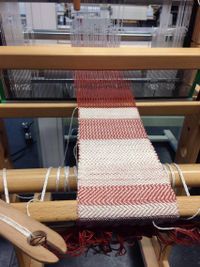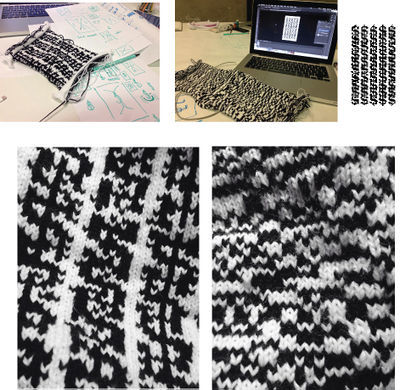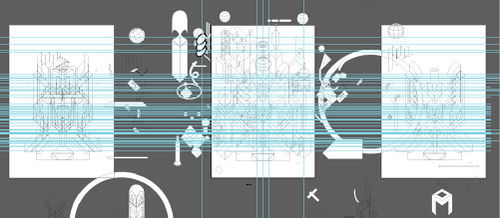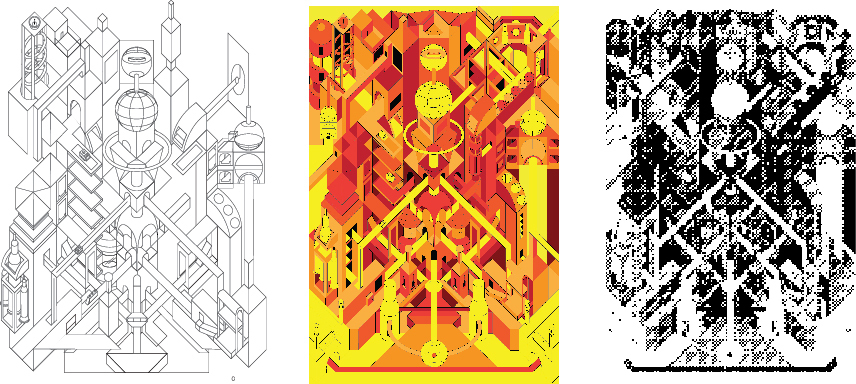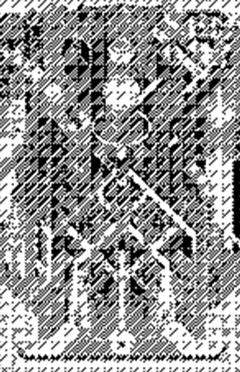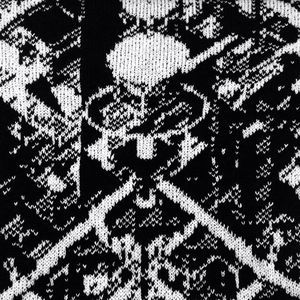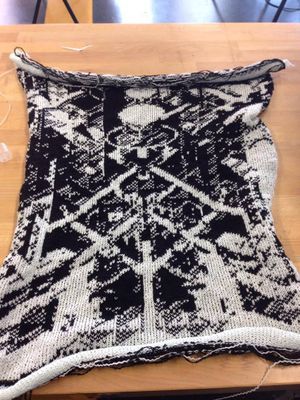User:Camie
0901265@hr.nl / Graphic Design
The old craft assignment is on this page > History of stitching: PROCES
Why am I a maker? (draft)
I’m a maker simply because of my need to give embodiment to what my mind envelopes out of the connection between my thoughts and my environment.
I’m a maker the moment these networks become the voices of the people that surround my work, trying to understand it, grasping at its meaning.
I’m a maker when at the same time I can express that meaning of action, and my work becomes the tool for more to come.
Stitching
Fish net scarf
First I wanted to check out weaving. When googling stitching I came onto a youtube tutorial of cardboard weaving, and decided to do that first as an introduction. It was fun, but not that challenging, so I went to the Fabric Station and got a hold of the weaving machine. There I received a document with weaving techniques and studied these, trying all of those techniques in a scarf. Also I decided to experiment with materials, and added the blue thread of a fishing net. It was a very hard, uneasy-to-mingle thread - so I really had to pull tight to get the wires attached.
"Weaving is a method of textile production in which two distinct sets of yarns or threads are interlaced at right angles to form a fabric or cloth. Similar methods are knitting, felting, and braiding or plaiting. The longitudinal threads are called the warp and the lateral threads are the weft or filling. (Weft or woof is an old English word meaning "that which is woven".[a]) The method in which these threads are inter woven affects the characteristics of the cloth.[1]
Cloth is usually woven on a loom, a device that holds the warp threads in place while filling threads are woven through them. A fabric band which meets this definition of cloth (warp threads with a weft thread winding between) can also be made using other methods, including tablet weaving, back-strap, or other techniques without looms.[2]"'
Workshop
In Brussels we went to a workshop given by Claire Williams. She graduated from ENSAV La Cambre with a master degree in Textile Design and works on personal projects and collaborations with other artists, researchers, hackers and non profit organizations. Involving open source textiles,floss software & hardware, hacked knitting machines, electronic textiles and stories on analogue textile techniques.
She challenged us to use Arduino, a programming code with which she hacked the knitting machine. Later she told us to collect data and put this into an image. I used the amount of data from the DataRoaming I used in Belgium, which was 197 mb and costs me 4,90 ct. I put this into the image with the $$$ and put it into the Arduino.
>.
Final Artefact
In the workshop with Claire Williams a lot of the tests I did had gone wrong. This because the Arduino glitched my image, orr because I didn’t place the thread right. That also inspired me for my final piece, in which I cooperate graphic posters I made - stack all of them together and in the end knitted the entire image.This was exciting because I didn’t knew what the computer/Arduino would do with it and therefore had no expectations. In the end it came out as an entirely new image, and I found I had unlocked a potential into a set of frames that already existed. An appropration of my own work on a different material, with a different context. A context that I could have never created without the knowledge I learned and received during the practice. I found out that I actually liked knitting like this, instead of doing it with my hands. The part where we hack the machine and repurpose it for something ‘futuristic’ as this really catched my attention. I call it futuristic because it’s an old machine used for modern purposes, something which potential (I believe) is still not fully discovered. So I decided to do something with that and try to discover the techniques of the Arduino. I made a graphic poster and put all of the images on top of each other, checking what would helpen if I would knit it.
>
Why am I a Maker?
Making requires communication with myself, and as I make I get to know myself better through the process of that what my mind births - and how it works. I’m a maker simply because of my need to give embodiment to what that mind envelopes out of the connection between my thoughts and my environment. I’m a maker the moment these networks become the voices of the people that surround my work, trying to understand it, grasping at its meaning. I’m a maker when at the same time I can express that meaning of action, and my work becomes the tool for more to come.
Eventually I’m a maker, because I need to live in a world where we live so fast we forget ourselves. We live our lives living half-lives, not aware of the choices we not-make - rethinking the thoughts that aren’t ours. Whenever I design something, I won’t be able to do it without myself. During the day I can live in my half-life, hide behind everyday-chores and make decisions about simple things. That saying I’m not always conscious because there is an everyday routine.
Making is another thing entirely. It has a purpose that grows deeper than those everyday things. and it doesn’t actually have a routine. It requires all of my attention and a lot of time. But at the same time all of that effort is only borrowed, surely given back to me when I finish in forms of new knowledge and self-contempt. I think that knowledge is what drives me most, because it improves me and makes me happy. That also inspires me to challenge myself and unlock certain potentials from which I didn’t knew they were actually there. But these moments also tend to disappoint me because I realise I can’t take it all in at once. For example, sometimes I create work that expressess an emotion. I think it’s powerful when I can make others feel what I’m feeling. Especially if it is personal, like a memory - or a recording. I can return to these images and relive them. At the same time that might be compareable to others.
I think that is why making is so important to me, and why I chose Digital Craft as a practice. At first when I heard our subject was stitching I wasn’t inspired. I never knitted, weaved or anything in that direction and as a graphic designer I mostly work on my computer. Therefore I found working with my hands very difficult, and decided to go to the Fabric Station and ask some help. The teachers there explained to me the different machines and techniques that go with it. In the past weeks, and together with the workshop Claire Williams gave, I learned to go back to the core of this craft a lot. It also teached me to bend this craft into a modern technique, while still holding it’s essence.
In the workshop with Claire Williams a lot of the tests I did had gone wrong. This because the Arduino glitched my image, orr because I didn’t place the thread right. That also inspired me for my final piece, in which I cooperate graphic posters I made - stack all of them together and in the end knitted the entire image.This was exciting because I didn’t knew what the computer/Arduino would do with it and therefore had no expectations. In the end it came out as an entirely new image, and I found I had unlocked a potential into a set of frames that already existed. An appropration of my own work on a different material, with a different context. A context that I could have never created without the knowledge I learned and received during the practice. I found out that I actually liked knitting like this, instead of doing it with my hands. The part where we hack the machine and repurpose it for something ‘futuristic’ as this really catched my attention. I call it futuristic because it’s an old machine used for modern purposes, something which potential (I believe) is still not fully discovered.
I don’t believe I am a maker that uses her hands a lot. With devices and codes like the Arduino you can make a lot of ideas happen fast. As a graphic designer I have learned and am still learning to work even faster, and that’s why I’m so used to digital craft. In this way I can more easily take care of all the thoughts I have, and to somewhat control the world I live in.
Working with my hands however does give me a lot of inspiration. At the graphic design department we silkscreen, letterpress and risoprint - but not a lot. Though whenever I use these machines, it gives me new perspectives and glitches that I would otherwise not have on a computerscreen because it’s too controlled. In that order; returning to the ‘old’ crafts of stitching also inspired me a lot to create something that still fits into the way I work, but just on a different platform and with new tools and new skills to achieve.
That reminds me that, once every while, I need to let go of the way I think I should make things. I found out that in this way I will be able to express much better what my mind wants to tell me, how I want to translate this to others, and how I can craft that specific idea to it’s full potential. This practice therefore had a big role to play in this because I had to face myself - and I am not able to make something without myself. The knowledge that it gave me was the following:
There is an inner compulsion that exists, and I have to continue to honor all (or at least one) of the reasons I mentioned of why I make. If I didn’t, I would feel really horrible. So whether attempting to make something has meaning or means nothing, original or digital - the fact remains that I will do it nevertheless.
